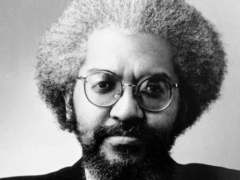Little-Known Black History Fact: Manning Marable and the Power of Harlem

Manning Marable was a leading historian of black history and author of “Malcolm X: A Life of Reinvention,” a long-awaited biography on Malcolm X released this year. In one of his writings called “Anything’s Possible,” Marable examines the history of Harlem and its evolution to an African-American mecca.
Dating back to 1914 and the migration of blacks from the south, Harlem was home to over 50,000 blacks. By 1930, that number had grown to well over 200,000. With the growing number of people came the establishment and migration of churches, like the Abyssinian Baptist Church. The associations that came to Harlem gathered around West 135th and 125th streets, even though businesses in the area were not black-owned at the time.
Major political movements spread through Harlem, building a spirit of empowerment. Among those was Marcus Garvey’s Universal Negro Improvement Association. Over 25,000 blacks marched down Harlem streets in 1920 in African colors to uphold Garvey’s message. Also with the movement came the tradition of soapboxing. Marable wrote that black socialist and orator Hubert H. Harrison began this tradition. On 135th or 125th, you could find a passionate standing on a soapbox or ladder, preaching their political agenda. Many were followers of the Nation of Islam. Following Harrison was A. Phillip Randolph, Adam Clayton Powell, Jr. and Marcus Garvey.
Marable stressed the birth of political mobilization and the Harlem tradition of empowering blacks to take action in the community. Though Harlem is no longer the largest black city in New York, its power through political culture and activism reaches beyond other cities. Launching leaders like former famor David Dinkins, Rep. Charles Rangel, Rev. Calvin Butts and Malcolm X, Harlem linked the rest of the world to the black power movement.
According to the late, great Manning Marable, Harlem is where differences are negotiated.
By: Erica Taylor, The Tom Joyner Morning Show